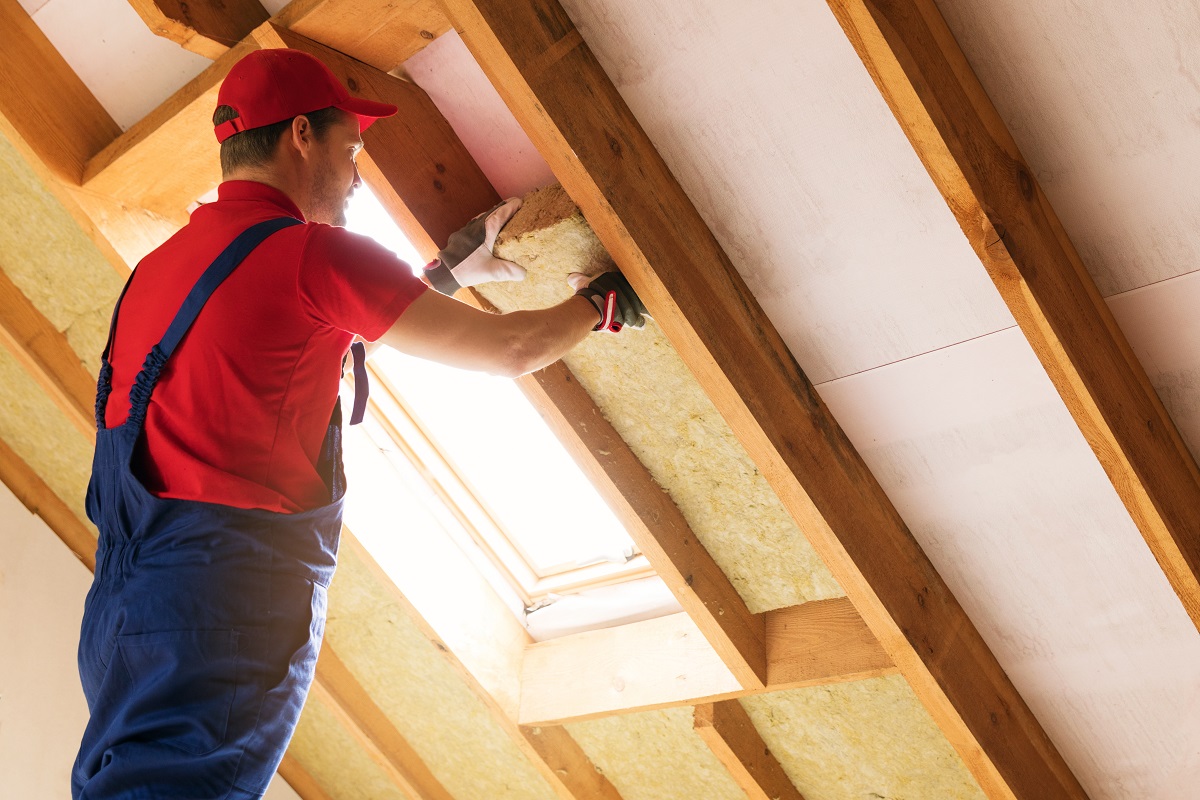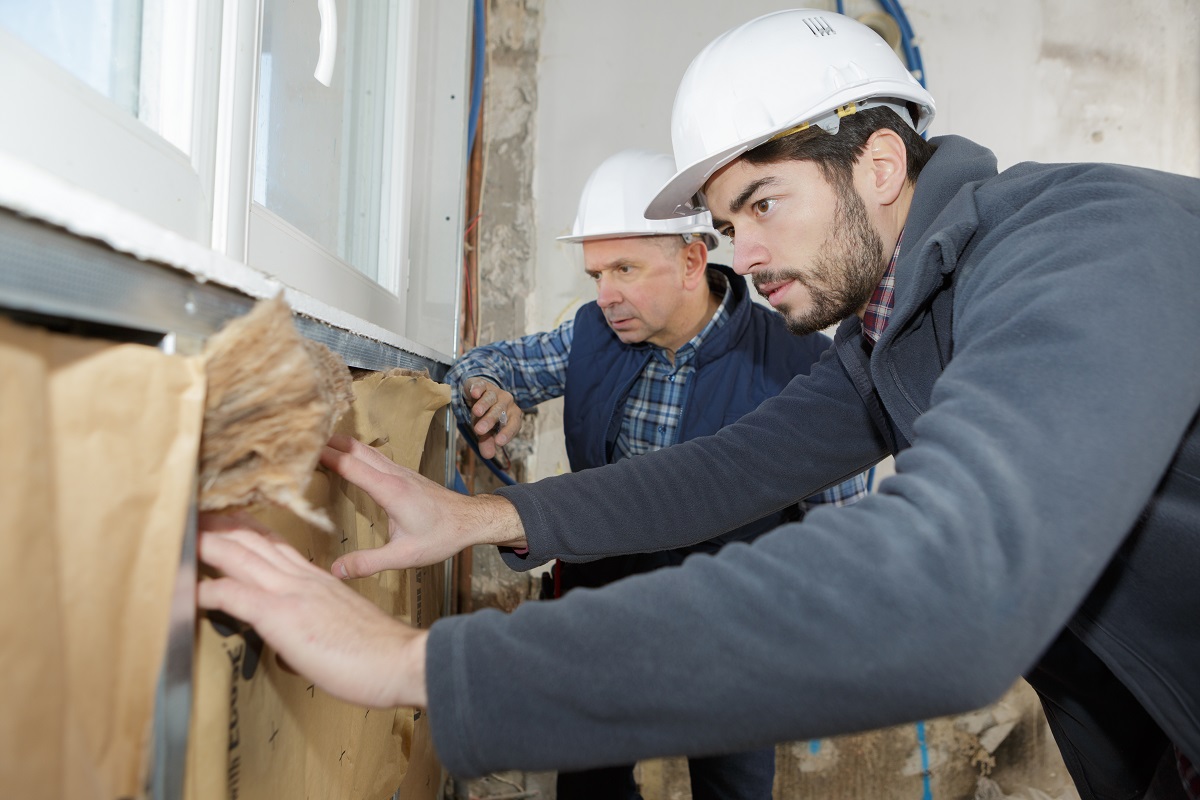
Many homes feature a room above the garage. These bonus rooms create extra functional space on your property without you having to expand into your yard. They’re great additions for homes with smaller lots and can be used for various purposes, such as an office, guest room, entertainment and hobby area, or a play space for kids.
Despite the number of possible uses for the space, it isn’t without some drawbacks. Rooms over a garage can be challenging to heat and cool because of where they are situated. So, many homeowners complain about their bonus rooms being too hot or too cold, discouraging them from using their bonus room and rendering that additional space useless.
These overly hot or cold bonus rooms are often a result of improper insulation. The warm or cold air from the garage and the adjoining rooms seep into the bonus room, making it difficult to maintain a specific temperature in that space. If you want consistently comfortable indoor temperatures in your bonus room, you need to properly insulate that room, the adjoining rooms, and the garage.
Garage Insulation
Most homeowners leave their unheated garages uninsulated, which is fine since they don’t need to maintain the temperature in that space anyway. If you have a bonus room, however, insulation becomes necessary even if you’re not heating your garage. The unconditioned air from your garage rises to the space above it, forcing your HVAC to work twice as hard to cool or heat the bonus room.
The first step to making your bonus room more comfortable, therefore, is to insulate your garage. Garages typically use any of the following types of insulation: fiberglass, rigid foam, cellulose, or spray foam.
Fiberglass Insulation
Fiberglass is the most popular insulation type for garages because of its affordability. It comes in pre-cut rolls, batts, and blankets that are easy to install, so you can save costs on installation by making a DIY project out of it.
Fiberglass batt insulation is an excellent option if you’re not heating your garage. It gives your bonus room enough thermal resistance without you having to spend thousands on insulation.
Rigid Foam Insulation
Opt for rigid foam insulation if you’re planning to convert your garage into a living space. Rigid foam is the only type of insulation that blocks heat transfer through structural elements like wood and steel studs, which is why it’s perfect for converted garages.
Rigid foam insulation comes in stiff panels typically made from polyurethane. The foam boards can be cut into any size and installed under another material, so you can use them to insulate the walls and floor of your garage.
Cellulose Insulation
Cellulose insulation is made from recycled newspaper treated with a fire retardant and comes in loose-fill form, making it a popular choice among eco-friendly homeowners.
If you have an unfinished garage, cellulose is your best insulation option. The loose-fill material conforms to any shape, so it easily insulates the spaces between the garage ceiling’s joists and beams.
Cellulose insulation requires the use of a special blowing machine for installation, which you can rent at your local hardware store. If a rental isn’t available, you’ll have to have an insulation contractor install it for you.
Spray Foam Insulation
Spray foam is the best type of insulation material. Apart from offering the highest thermal resistance values, the insulating material also creates a solid barrier that blocks air and moisture gaps.
The downside to spray foam insulation is its cost. At $1.50 to $4.90 per square foot, it’s an expensive way to insulate an unheated garage. However, it can be an effective choice if you’re planning to convert your garage into a full-time living space, such as a home office or guest room.
Garage Ceiling Insulation
If your bonus room still gets overly hot or cold even with an insulated garage, your garage ceiling insulation might need to be updated.
Many building companies insulate garage ceilings using fiberglass batts, which leave gaps in between where air can pass through. If your garage uses fiberglass batt insulation, we recommend replacing it with spray foam instead. Spray foam fills the entire ceiling gravity and closes off any gaps that allow airflow.
To save costs on spray foam insulation, you can have it installed in the gaps between the existing fiberglass batts instead of taking them all out and replacing them.
Make sure to hire a professional contractor to update your garage ceiling insulation because you’ll need to remove the ceiling drywall and redo it after installing the spray foam.
Bonus Room Insulation
The room above your garage needs proper insulation, too. When insulating bonus rooms, you want to focus on three areas: the floor, the exterior walls, and the knee wall.
Floor Insulation
Pay extra attention to your bonus room’s floor insulation, especially if it’s not possible for you to insulate your garage ceiling with spray foam. Floor insulation is generally thinner than ceiling insulation, but it costs less to install and provides almost the same thermal resistance.
Your bonus room floor has three layers: the finished top layer, the structural bottom layer, and the middle underlayment that serves as insulation. An insulating underlayment is different from floor insulation. The former is an additional layer of material installed beneath your flooring, whereas the latter is packed between the joists under the subfloor.
Because the insulating underlayment is layered directly beneath the finished floor, it helps soundproof the bonus room and create a smoother flooring surface, which fixes the subfloor’s unevenness. The underlayment can also add protection from moisture, depending on the material used.
You can find various underlayment products made from materials with excellent insulating properties, including polyurethane foam, silicone, and fiberglass. These underlayment materials offer different insulation values, underfoot feeling, and soundproofing properties.
Although underlayment isn’t difficult to install, you do need to remove and reinstall your finished floor, so it’s better to hire a professional to do the job for you.
Exterior Wall Insulation
You can insulate the exterior wall of your bonus room as you would with any other room in your home since your goal here is just to reduce the amount of heat lost and gained by the said wall.
 The easiest way to insulate an exterior wall is to install the material on the inside of the wall. Traditional fiberglass batts should suffice, but you should consider investing in spray foam insulation, especially if you live in an area that experiences sweltering summers or freezing winters.
The easiest way to insulate an exterior wall is to install the material on the inside of the wall. Traditional fiberglass batts should suffice, but you should consider investing in spray foam insulation, especially if you live in an area that experiences sweltering summers or freezing winters.
Make sure to overlap the batts when possible. The insulation should fit snugly from the top to the bottom of the exterior wall to block all the potential paths of heat transfer. You can cut small sections from the batts and stuff them in the nooks and crannies of the wall, such as around the windows, doors, and vents to be thorough.
Once you’re done installing the fiberglass batts, layer a continuous sheet of vapor barrier across the wall to protect it from moisture problems. You can begin installing drywall afterward.
Knee Wall Insulation
Many homeowners forget to insulate their attic knee walls, which still leads to an uncomfortably hot or cold bonus room. Knee walls are the short walls underneath sloped ceilings that separate the bonus room from the attic space above the garage.
When left uninsulated, knee walls end up absorbing warmth from or releasing conditioned air to the outside through the attic. Not only does this make your bonus room uncomfortable, but it also increases your energy consumption and spending.
The common way of insulating a knee wall is by installing rigid foam insulation on the wall itself and the attic floor behind it. If you’re going with this method, you need to protect the insulation with an air barrier, which means air-sealing the knee wall as if it was an exterior wall.
Seal all the potential air gaps on the knee wall and the attic space behind it, including duct penetrations and electrical boxes.
An easier method of knee wall insulation is by insulating the sloped ceiling. This way, you won’t have to insulate the knee wall itself. The insulation should extend from the birdsmouth joint, or the triangular joint at the base of the roofing joist, to the flat ceiling above the second floor.
You can use either fiberglass batts, loose-fill cellulose, or spray foam for this insulation method.
Insulating the Room Over the Garage
Insulating the room above your garage can be a hassle since you likely need to remove the drywall and flooring. Doing so, however, can save you money in the long run.
An uninsulated bonus room is a huge waste of money. It’s uncomfortable to use, so you won’t be maximizing your investment in its construction. Additionally, it guzzles energy by absorbing warm or cold air from the outside, forcing your HVAC system to work twice as hard to maintain the temperature you want.
To keep the room over the garage from overheating, hire a contractor with ample experience in insulating bonus rooms. A+ Insulation is an insulation expert based in Kansas City. We offer a wide range of insulation solutions for the different parts of your home, including your garage, attic, and bonus room.
Fill out our online form to schedule a free, no-obligation inspection and insulation cost estimate for your bonus room.